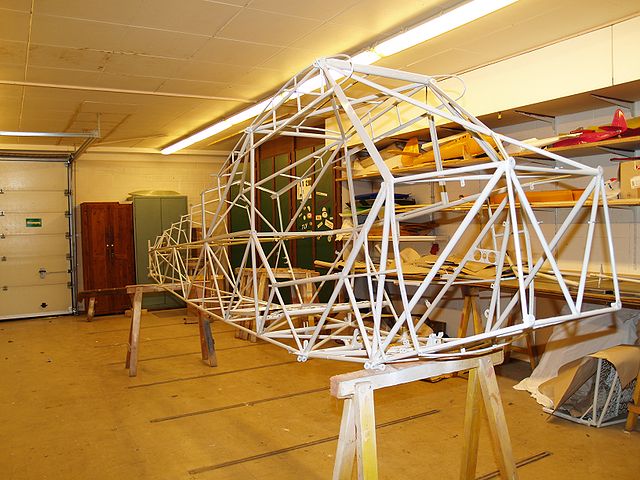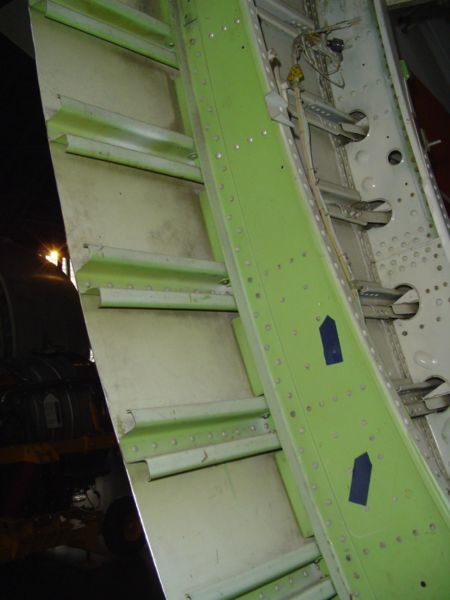The fuselage is an aircraft's main body section. It holds crew, passengers, or cargo. In single-engine aircraft, it will usually contain an engine as well, although in some amphibious aircraft the single engine is mounted on a pylon attached to the fuselage, which in turn is used as a floating hull. The fuselage also serves to position the control and stabilization surfaces in specific relationships to lifting surfaces, which is required for aircraft stability and maneuverability.
Piper PA-18 welded tube truss fuselage structure
The Van's Aircraft RV-7 of semi-monocoque construction
Sectioned fuselage of a Boeing 747 showing formers, stringers and skin all made of aluminium
Inside view of the wooden, fabric-covered fuselage of a Fisher FP-202.
An aircraft is a vehicle that is able to fly by gaining support from the air. It counters the force of gravity by using either static lift or the dynamic lift of an airfoil, or, in a few cases, direct downward thrust from its engines. Common examples of aircraft include airplanes, helicopters, airships, gliders, paramotors, and hot air balloons.
The Cessna 172 Skyhawk is the most produced aircraft in history.
Hot air balloons
Airship USS Akron over Manhattan in the 1930s
An Airbus A380, the world's largest passenger airliner








